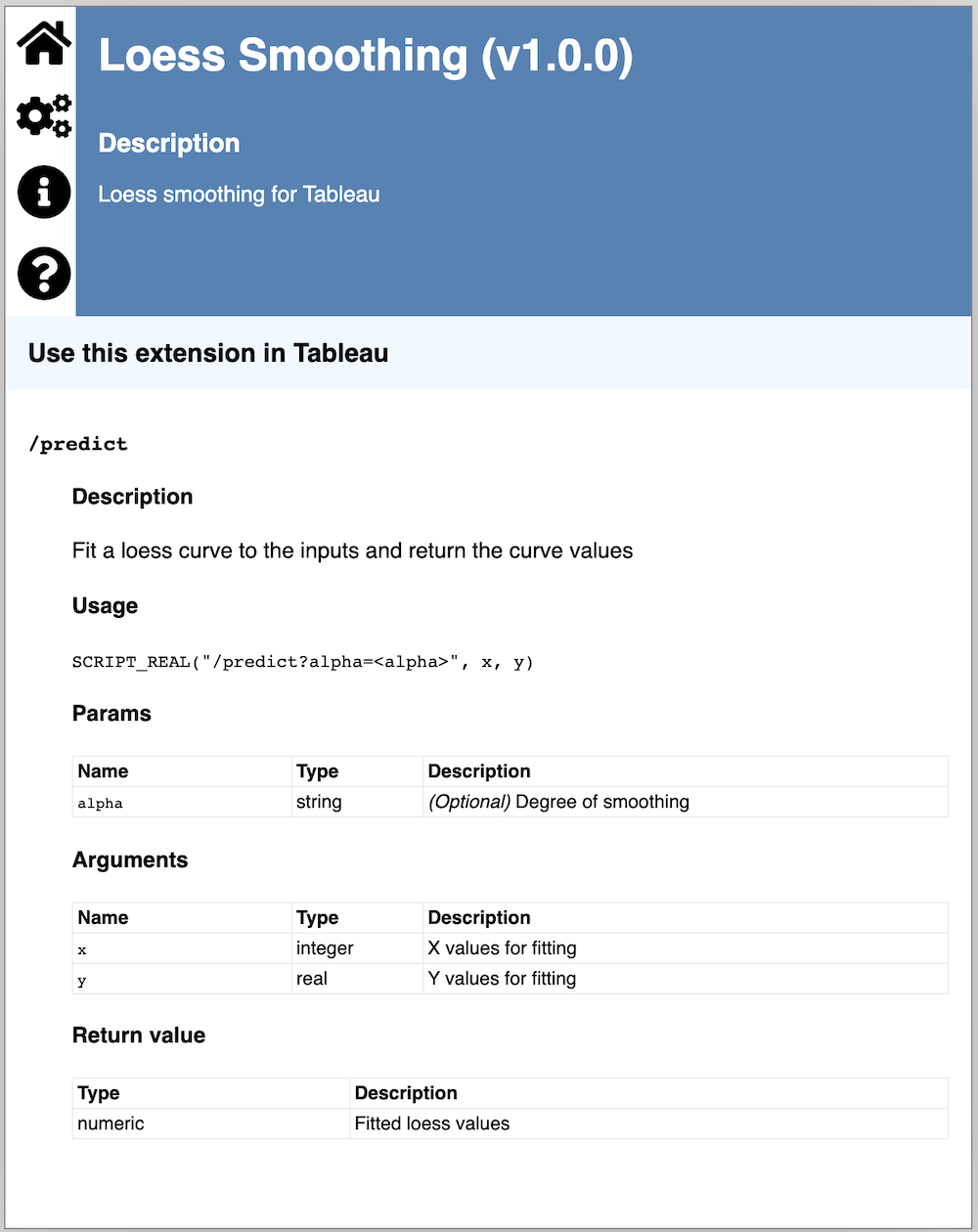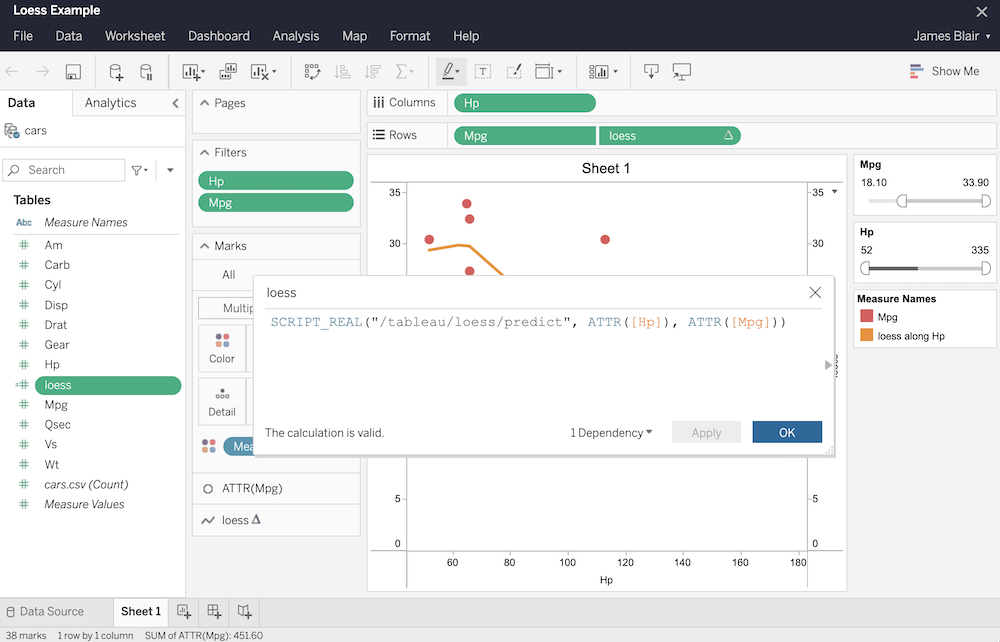Using plumbertableau Extensions in Tableau
Source:vignettes/tableau-developer-guide.Rmd
tableau-developer-guide.RmdBefore you use plumbertableau extensions in Tableau, you’ll need to configure your extension server in Tableau. See “Publishing plumbertableau Extensions to RStudio Connect” for detailed instructions on setting up Tableau and RStudio Connect to work together.
plumbertableau extensions are used within calculated fields in Tableau, with calls to Tableau’s SCRIPT_* functions.
Viewing Info on an Extension
plumbertableau automatically generates a documentation page with example calls for each endpoint in the extension. These are what you see when you view the extension on RStudio Connect.

This page includes the following information about the extension:
- The API’s name and description
- Links to other important pieces of documentation, including instructions for configuring Tableau, and the OpenAPI (Swagger) documentation for the extension
For each endpoint, it includes:
- A usage example calling Tableau’s appropriate
SCRIPT_*command, ready for use in a Tableau workbook - Names, types, and descriptions for Tableau arguments, URL parameters, and return data returned
Calling an Extension Endpoint in Tableau
You can copy and paste the usage example (the SCRIPT_* command) into a calculated field in Tableau (it generates the correct URL), and replace the argument placeholders with actual values from the Tableau workbook.

Using a plumbertableau extension in a calculated field
Working with Tableau Data
We’ve found that a few practices in Tableau ensure that the data you pass to a plumbertableau extension is sent correctly.
- You must turn off “Aggregate Measures” under the “Analysis” menu for Tableau to pass the correct values to the extension. If this setting is on, Tableau will send aggregated data to the extension, which may cause inaccuracies in computations.
- With this value off, calculated fields don’t allow you to pass raw values directly to an extension. Those values must be wrapped in an aggregating function. Since we’ve turned “Aggregate Measures” off, these functions won’t actually aggregate the data. We’ve had success using
ATTR([VALUE_NAME]).